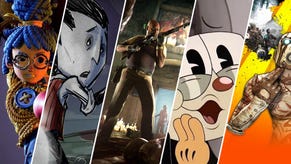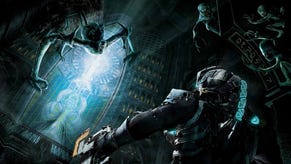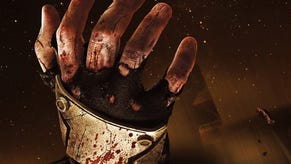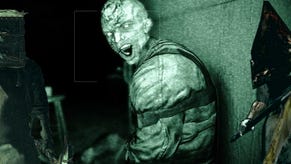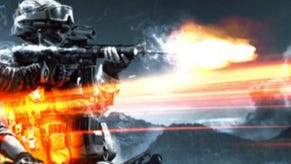2013 In Review: Dead Space 3 and the Problem With Big-Budget Horror Sequels
Dead Space 3 wasn't a horror game, but that's not entirely its fault. Why AAA sequels and horror don't mix.
This article first appeared on USgamer, a partner publication of VG247. Some content, such as this article, has been migrated to VG247 for posterity after USgamer's closure - but it has not been edited or further vetted by the VG247 team.
Earlier this year, former Epic Games designer Cliff Bleszinski wrote a post on his personal Tumblr arguing that horror games are a difficult sell in the $60 disc-based market. Part of his premise was the idea that horror in games is generally based on the idea of weakness on the part of the player, an idea that conflicts with most mainstream AAA titles.
"Generally speaking, the scarier a game is, the less empowered a player feels," wrote Bleszinski. "In the $60 disc-based market horror doesn't fly - it's the ultimate 'Campaign Rental' that's played for two days and traded in and I'm sure EA knows this. When we're fully digital we'll see more true horror games coming back."
The game that sparked Bleszinski's desire to write the post was Dead Space 3, which sits as the title that completed the series' full shift from survival-horror to action. For horror fans, Dead Space 3 was a bitter pill to swallow because the first Dead Space was one of the great games of the genre. When something has such a great start, the sense of loss is keenly felt.
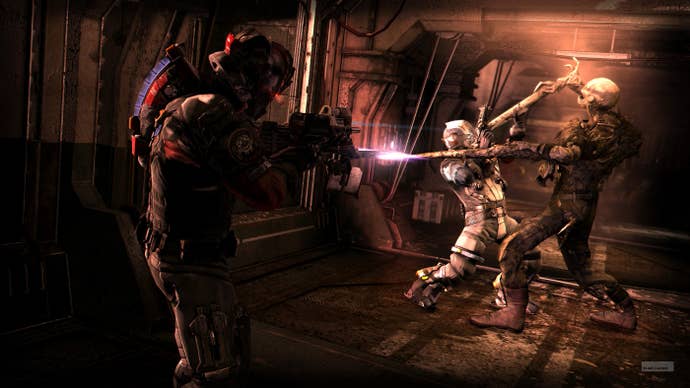
Horror is hard to pull off in a big-budget game and developers have to walk the tightrope between fear, which tends to stem from lack of control or power, and player agency, which wants to give more control and power to the player. Hollywood tends to have the same problem: they want to scare the audience, but they also have the pressing need to explain what is terrorizing the characters. Generally, the least scariest point of a horror movie is when they show what's killing everyone. Two opposing ideas fighting for control.
I'm not a big fan of pure horror titles like the first Amnesia, Outlast, some of the Silent Hill games, and the Fatal Frame series. My preference is to have the firepower necessary to defend myself to a certain point. There's still tension in that type of survival-horror game, but it tends to come from the dread of being far from a safe area with little ammo on your favorite weapon. The games I prefer lean on the 'survival' side of the genre.
Resident Evil 4 is my favorite game in that series and hits my desired balance perfectly. It pushed the series towards action without the excesses of Resident Evil 5, featuring Hulkamania Chris Redfield punching boulders. RE4 traded the limited ammo, enclosed areas, and small arsenal of previous Resident Evil games for a nimble Leon Kennedy against hordes of Ganado in a dead town. The change in the game's camera from fixed to behind-the-back also changed the player's relation to Leon: when an enemy is behind Leon, it's behind you. It brought me closer to the character's situation.
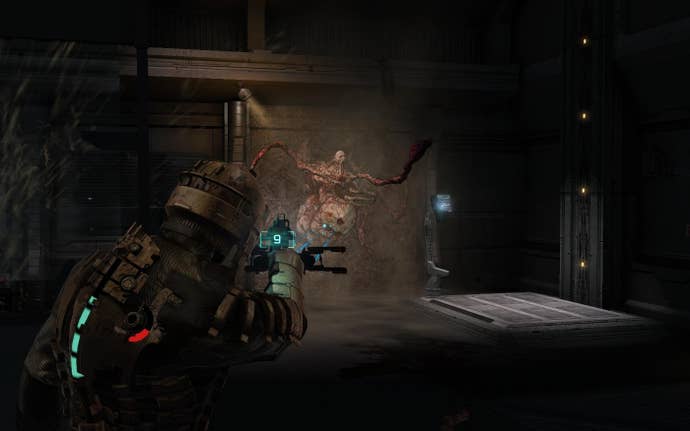
2008's Dead Space leaned towards the horror side of things, while still building upon Resident Evil 4. It removed the last wall between the player and the game: the character. Issac Clarke was a known quantity in Dead Space - his mission, to find out what happened to to his girlfriend was the impetus for the entire game - but Clarke didn't speak. For most of the game, you were Clarke and Clarke was you, alone and barely armed on USS Ishimura. You had options to defend yourself, but it was entirely possible to find yourself swinging an empty Plasma Cutter and stomping your way back to a save point. For most Dead Space, you were playing a dark, claustrophobic horror game.
Dead Space 2 brought the series to the same horror-action balance found in Resident Evil 4. Clarke became a character in his own right, with his own voice and thoughts on his dire situation. The game's supporting cast grew. The confines of the Ishimura were traded for the wide-open Sprawl, a space station in the last stages of a Necromorph invasion. There are rooms full of enemies to gun down, bigger set pieces and bosses, and Issac even takes the fight out into space.
There's also another big change, one that was present towards the end of the first Dead Space: familiarity. Part of horror based on that unknown factor. Silent Hill's shrouded fog, Resident Evil's camera angles and lack of ammo, Amnesia's darkness; all of these things add to player uncertainty, because that is where true horror lies.
By the end of Dead Space, I had the necromorphs down to a science and was well-versed in taking them down. I could reasonably guess where a necromorph was probably going to pop out. ("Oh hey, look at that vent.") In fact, I only used the Plasma Cutter in my first run-through because it was the superior weapon for dissecting necromorphs. In Dead Space 2, I began the game with solid understanding of the necromorphs and the weapons I had to use to deal with them. Outside of a few new additions, I was comfortable with Dead Space 2. Comfort is the enemy of horror, and unfortunately, there's not much Visceral Games could do to fix it.

So, when Dead Space 3 rolled around, the comfort was fully entrenched. I knew what was coming. I played Dead Space 3 to see the end of the conflict between Issac and the Markers. Fear of the unknown wasn't even in play. More enemies, bigger enemies, more environments, a larger supporting cast, and better weapons greeted me this time around. Human foes and cover-shooting galleries cemented the series transformation into an action game. Was there tension? Yes, but it wasn't consistent. Most of the time, I felt fully in control of Issac situation.
Dead Space 3 had one big change that absolutely killed the tension: the modular weapon system. To make that weapon system work, Visceral had to remove ammo types and replace them with universal ammo. Gone were the days of needing Plasma Cutter charges only to find an ammo drop for the FlameThrower. In fact, I never ran out of ammo in Dead Space 3. It's the difference between the same character, Detective John McClane, in Die Hard and A Good Day To Die Hard. One is a character surviving through one horrible day using whatever they have at their disposal. The other is an invincible superman who's been through this before. I don't know what came first, the modular weapon system or the decision to add microtransactions to Dead Space 3, but either way it was a step in the wrong direction.
While the weapon system change was on Visceral, I'm not sure much could be done to alleviate the familiarity. I think it's part of why the first or second games in horror series are so well loved. Players haven't had a chance to learn that world's language. It's a brave new world and everything is against them. You can't capture the same feeling found in the first Silent Hill and Silent Hill 2, because players are expecting certain things. Stray too far and you run the risk of alienating them completely. They play later games to continue the story of a character or place, not necessarily because the scares are there. Each sequel is an attempt by the creators and audience to recapture lightning in a bottle.

For horror, most developers are probably better off leaving a specific world or set of tropes behind after one or two games. Moving onto something new resets the player's comfort level with the world. Perhaps another team could do something with your old property, but it would have to be done by hollowing out the framework and doing something completely new.
Which brings us back to Bleszinski's comment that horror games aren't built for the $60 disc-based market. Why? Because that market is predicated on providing a familiar and polished experience for players, which ultimately clashes with the objectives of horror. AAA is the antithesis of horror. Like horror films, it's best to stick with a small budget and try something new. The first outing, like the film Sinister, will tend to be scarier than a sequel like Insidious: Chapter 2 because you're heading into the former without foreknowledge of its world.
I still like Dead Space 3. I was invested in the story across two animated films, a comic, and two novels. I wanted to know how it was going to end. But as I argued in yesterday's Tomb Raider article, it's entirely possible that Dead Space the series is dead, only to have been replaced by Dead Space the series. If I want to recapture the same feeling I had in Dead Space, it's probably going to be up to a smaller, newer team doing something different. In the end, the problem with horror is you can't go home again.


